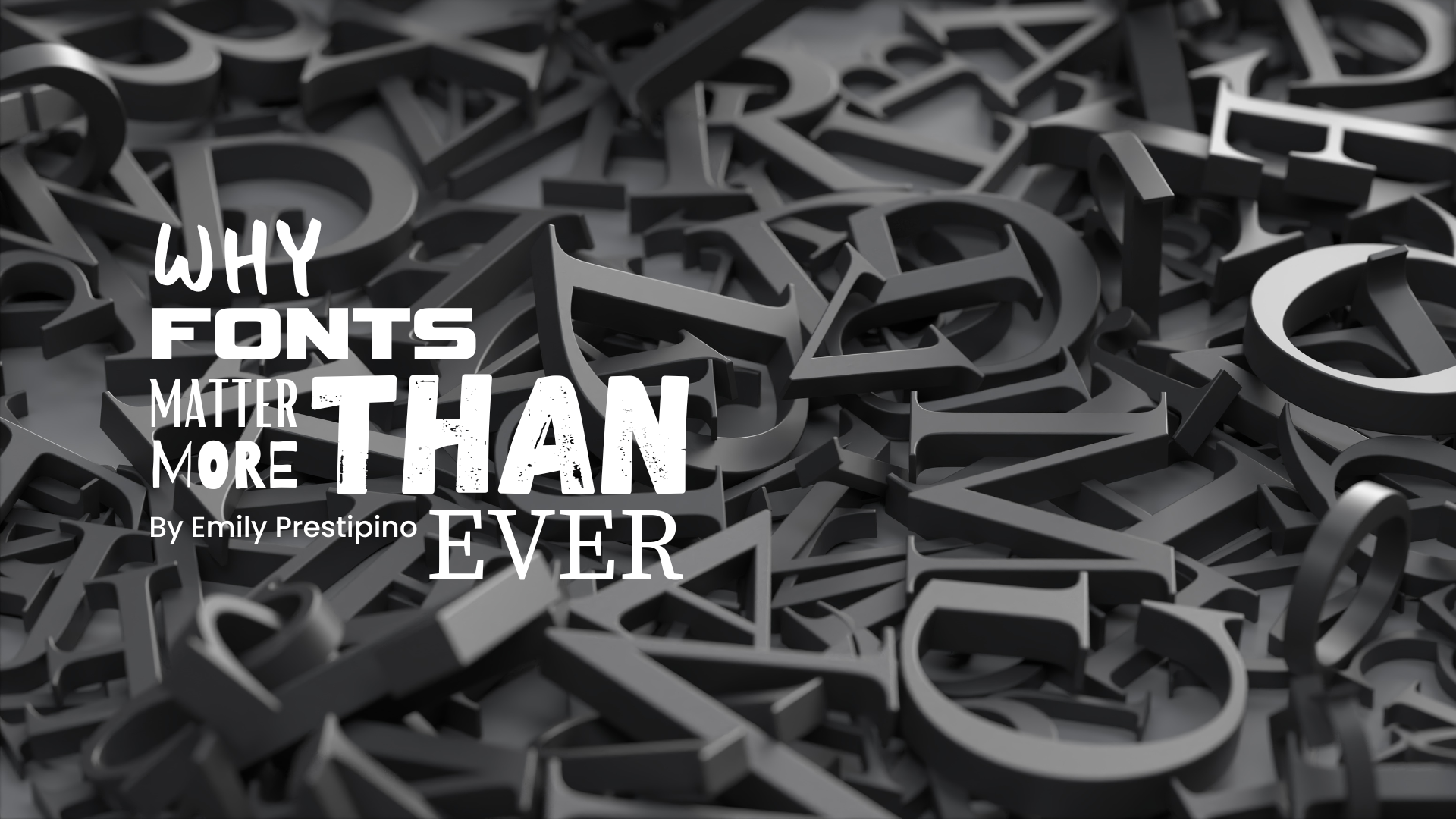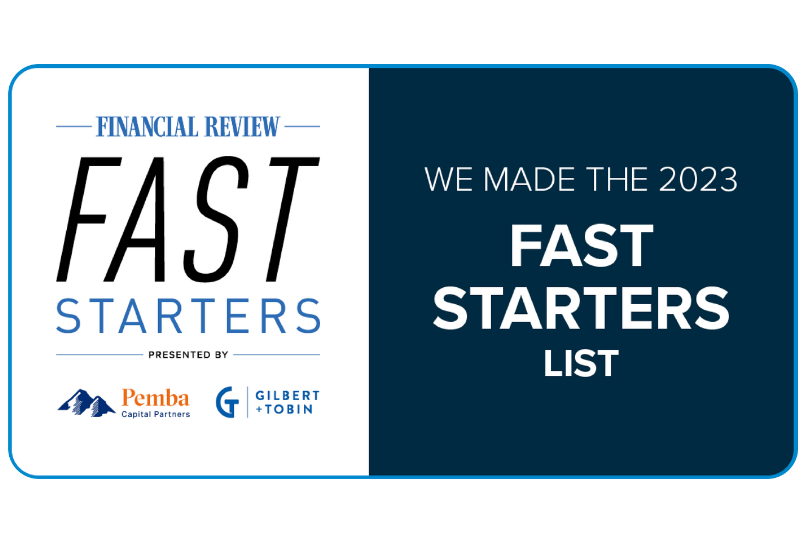WRITTEN BY THE HEY MARKETING TEAM
Digital Diary
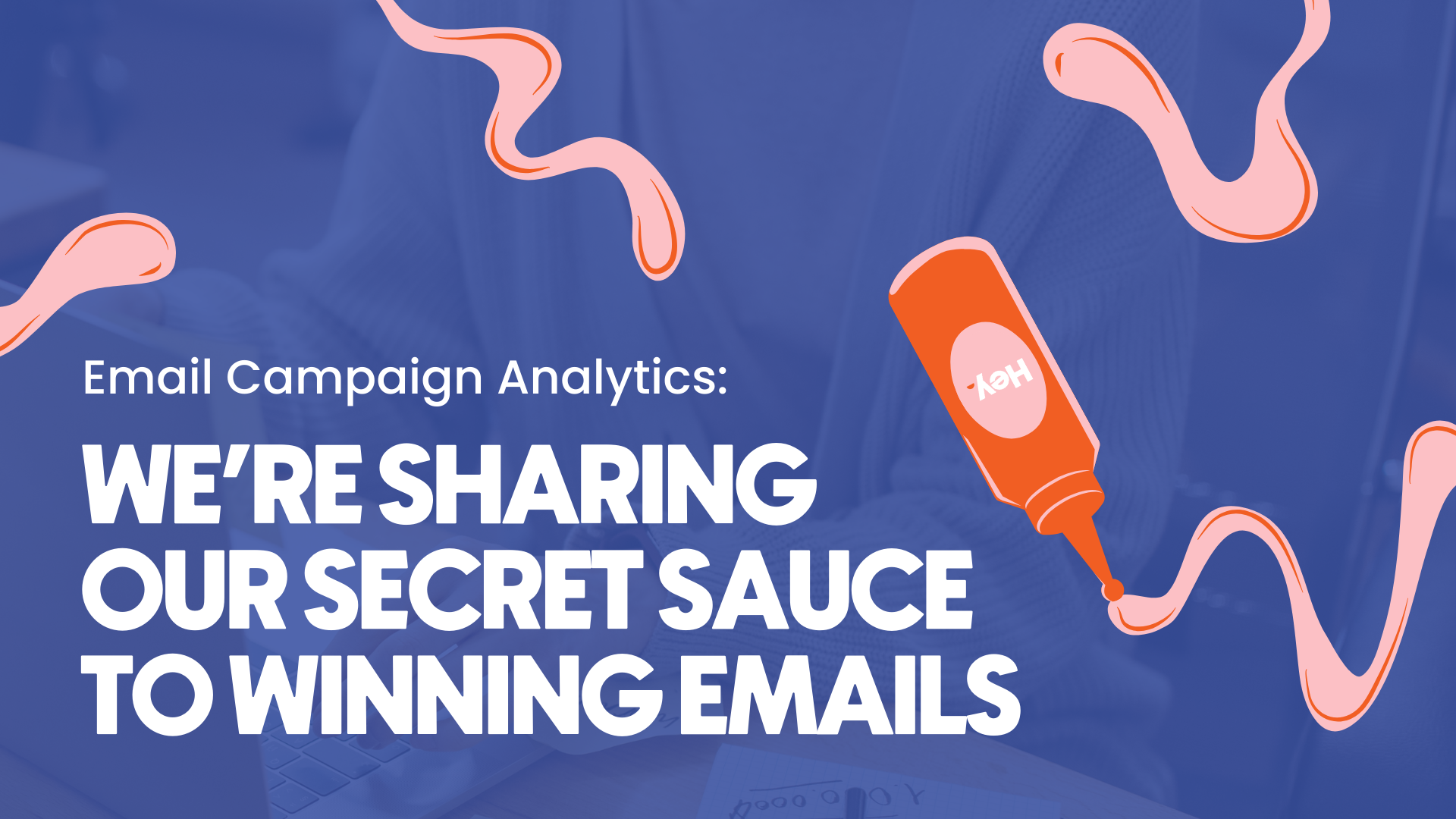
By Madeleine Riehl
•
April 16, 2025
You’ve crafted the perfect email. The subject line is witty, the design is sleek, and your CTA is chef’s kiss. You hit send, sit back, and… then what? Do you cross your fingers and hope for the best? Light a candle for good luck? Or maybe you forget you sent it at all? Stop doing all of that and start thinking about email campaign analytics and actually review them, it’ll change your whole email marketing strategy (I pinkie promise)! In this blog I want to break down the key metrics you should be tracking—without the tech jargon, just a good ol’ friendly chat. 1. Open Rate: Did They Even Show Up? Think of your email like a party invite. You send it out, but how many people actually open it? That’s your open rate—the percentage of recipients who clicked on your email. How to boost it? • A killer subject line (curiosity and personalisation go a long way) • Proper sender name (people open emails from humans, not robots) • Avoiding the spam folder (because what good is an invite if it lands in the trash?) 2. Click-Through Rate (CTR): Did They Take the Bait? Great! They opened your email. Now what? CTR measures how many people clicked on your links. It’s like checking how many party guests actually made it to the dance floor instead of just lurking by the snack table. How to boost it? • Engaging content (keep it clear, concise, and valuable) • A standout CTA (bold, obvious, and irresistible) • Mobile-friendly design (no one likes squinting at tiny buttons) 3. Conversion Rate: Did They Do the Thing? Clicks are great, but did they actually sign up, purchase, download, or click? That’s your conversion rate—the ultimate proof that your email is doing its job. How to boost it? • A seamless user journey (from email to landing page, make it smooth) • Persuasive copy (why should they act NOW?) • Social proof (testimonials, reviews, and success stories) 4. Bounce Rate: Oops, That Didn’t Work… If an email bounces, it means it never reached the recipient’s inbox. It’s like sending an invite to an address that doesn’t exist. There are two types of bounces: • Soft bounce: Temporary issues (like a full inbox) • Hard bounce: Permanent issues (like an invalid email) How to fix it? • Keep your email list clean and updated • Use double opt-in to ensure valid emails • Remove inactive subscribers 5. Unsubscribe Rate: The Party Poopers Nobody likes to see unsubscribes, but they’re part of the game. It’s like when guests leave early—it happens, but you want to make sure it’s not because of a bad DJ (or, in this case, annoying emails). How to reduce it? • Don’t spam people (send relevant, valuable content) • Let them control frequency (weekly vs. monthly options) • Personalise your emails (so they feel special, not spammed) 6. ROI: Is It All Worth It? At the end of the day, you want to know if your email efforts are paying off. Return on Investment (ROI) tells you if your campaigns are bringing in more money than they cost. How to improve it? • Test different strategies (A/B testing is your BFF) • Segment your audience (the right message for the right people) • Automate and personalise (efficiency + relevance = $$$) My final thoughts: Keep an Eye on the Numbers! I’m not great with numbers but analytics are critical, so pay attention! They tell a story. Analytics aren’t just fancy charts and percentages—they tell you exactly what’s working (and what’s flopping) - they don’t lie. Track these key metrics, tweak your strategy, and watch your email campaigns go from meh to magic (that was cringey but I had to, sorry!). Now, go forth and send emails that people actually want to open! P.S. If you need help crafting emails that get results, let’s chat. Your client's inbox deserves better.
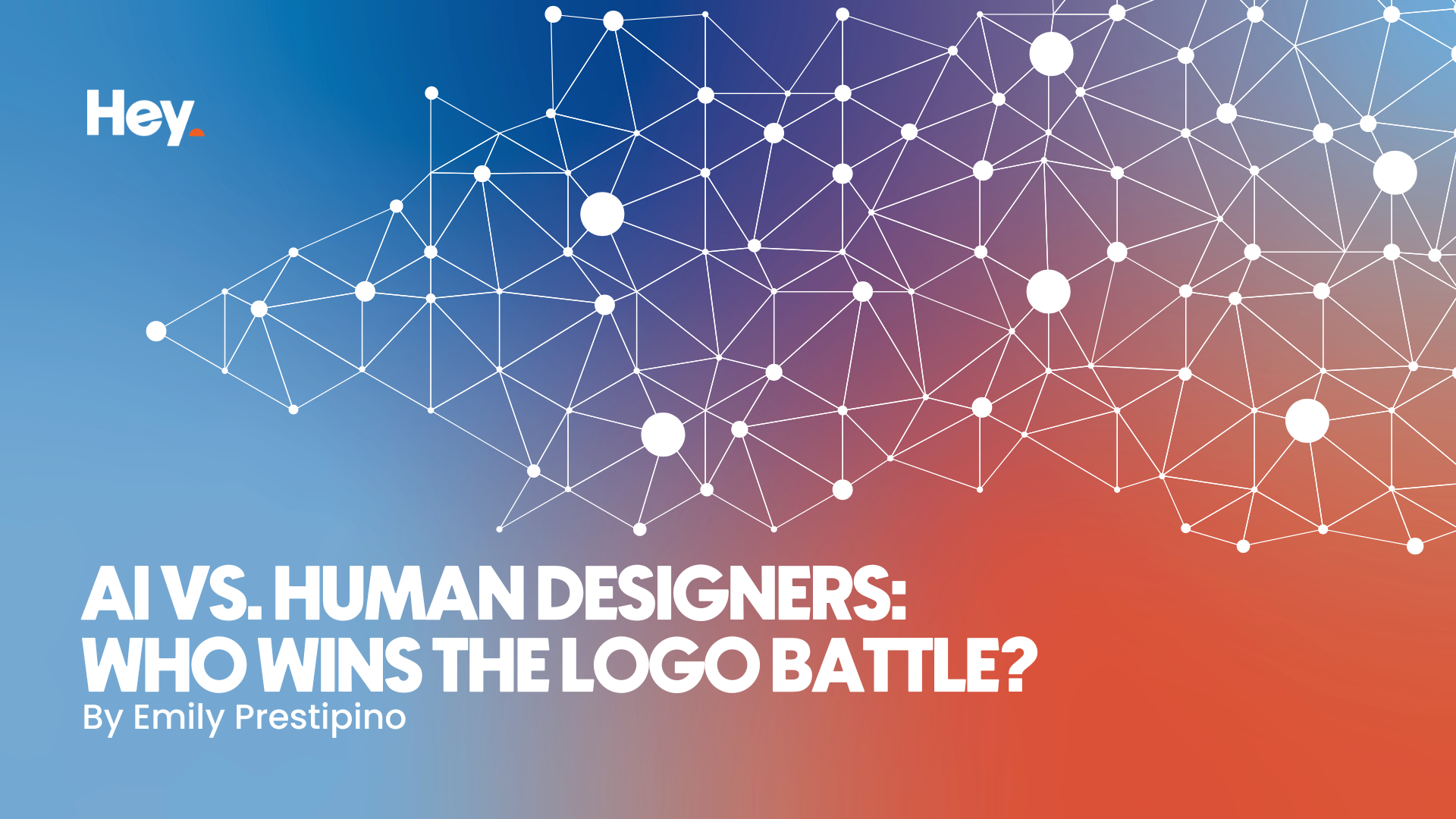
By Emily Prestipino
•
April 9, 2025
AI is everywhere; your group chats, your work meetings, your dinner table debates. Everyone’s got an opinion, and most people have at least a surface level idea of what AI can do. But when it comes to design, is AI about to swoop in and steal the job of human designers? Let’s break it down. For startups and small businesses running on tight budgets, AI powered logo generators can seem like a lifesaver. Need a logo? Click a few buttons, and voilà! Instant brand identity (sort of). These tools provide a quick and budget friendly way to get a logo without immediately hiring a designer.

By Perri Adkins
•
March 31, 2025
A brand’s legacy is one of its biggest strengths, built over years; sometimes even decades, of trust, recognition, and emotional connection with its audience. But as times change, so do design trends, customer expectations, and digital platforms. So, how can a legacy brand refresh its identity, especially its logo, without losing the elements that make it special? 1. Understand the Core Identity Before making any design changes, it’s important to figure out what parts of the brand’s identity are essential. Ask yourself: What are the must-keep elements that customers instantly recognise? What emotional connection does the audience have with the brand’s look? What historical significance does the logo carry? Gathering feedback through surveys, customer interviews, and brand audits can help pinpoint what should stay the same and what can be updated. 2. Keep Key Visual Elements A logo refresh should feel like an upgrade, not a total makeover. Look at keeping elements like: Colours: If the brand is known for a specific colour, keep it or tweak it slightly for a fresh look. Fonts: Updating typefaces to a modern style while keeping familiar characteristics can create continuity. Symbols: If there’s a well-known emblem in the logo, consider refining it rather than replacing it entirely. 3. Simplify and Streamline Many legacy brands go for subtle tweaks rather than drastic changes. Simplifying the design can help keep it modern and functional. That might mean: Making lines bolder for better visibility at any size. Removing outdated or cluttered design elements. Adjusting proportions to create a more balanced, aesthetically pleasing look. 4. Embrace Modern Design Principles While keeping the brand’s heritage intact, it’s also important to stay relevant. Consider these updates: Minimalism: A cleaner, more streamlined look makes the logo more versatile. Scalability: The logo should work just as well on a social media icon as it does on a billboard. Versatility: A design that looks great in both black-and-white and full colour increases usability across different mediums. 5. Test and Gather Feedback Once you have a modernised version of the logo, test it out. Share it with stakeholders, loyal customers, and focus groups to get their thoughts. A phased rollout can also help ease the transition and maintain brand trust. 6. Communicate the Evolution A logo update is a big deal, so make sure to communicate it effectively. Let people know: Why the redesign was necessary. What elements were kept to maintain the brand’s essence. How the brand’s core values remain the same. Refreshing a legacy brand’s logo is all about honouring its past while preparing for the future. The best approach is thoughtful refinement rather than a complete reinvention, ensuring customers still see the brand they know and love, just with a fresher, more modern feel. By striking the right balance, brands can successfully evolve while keeping their identity intact. After all, change is inevitable but staying true to who you are is priceless.

By Sophie Mara
•
March 26, 2025
In the digital age, businesses are constantly vying for the attention of potential customers, and social media has long been a go-to platform for many. However, when it comes to driving consistent, high-quality results, email marketing stands out as the more powerful tool. Here are some key reasons why email marketing is essential for businesses, particularly when compared to social media. 1. You Own Your List (It’s YOURS!) Unlike social media platforms, where algorithms and third-party control dictate what your audience sees, with email marketing, you own your list. Building and maintaining an email list means you have direct access to your audience without being at the mercy of changing platform rules. This control gives you the ability to communicate with subscribers on your terms, ensuring that your message reaches them consistently. 2. Higher Conversion Rates (You’re talking direct!) Studies consistently show that email marketing boasts higher conversion rates compared to social media. This is because emails are sent directly to your audience’s inbox, making them more personal and less likely to be ignored in the crowded social media feed. When done right, email campaigns can encourage direct action, such as making a purchase, signing up for an event, or engaging with content, leading to a more tangible return on investment. 3. Personalised Customer Journeys With email marketing, you can craft highly personalized experiences for your subscribers. By segmenting your list and tailoring content based on user behavior, interests, and preferences, you can guide prospects through a more personalized journey. This level of customization is harder to achieve on social media, where you’re often addressing a broad audience with varying interests. 4. Valuable Data Insights Email marketing provides detailed analytics, such as open rates, click-through rates, and conversions, which allow businesses to continuously refine and optimize their strategies. This data is invaluable in understanding customer behavior and improving future campaigns, giving you more control over your marketing efforts than what social media platforms typically offer. In conclusion, email marketing provides a level of ownership, personalization, and data-driven insights that social media simply can’t match. By investing in email marketing, businesses can ensure they reach their customers more effectively and efficiently - we love that! Ready to discuss an email marketing strategy for your biz? Just say Hey.

By Madeleine Riehl
•
March 19, 2025
Once upon a time, there was a brand. The End. Just kidding! Let’s start again. Once upon a time, there was a brand, it had a great product, an excellent service, and a solid marketing plan (and I heard their marketing team was really good looking). But something was missing, connection. That’s where storytelling came in.
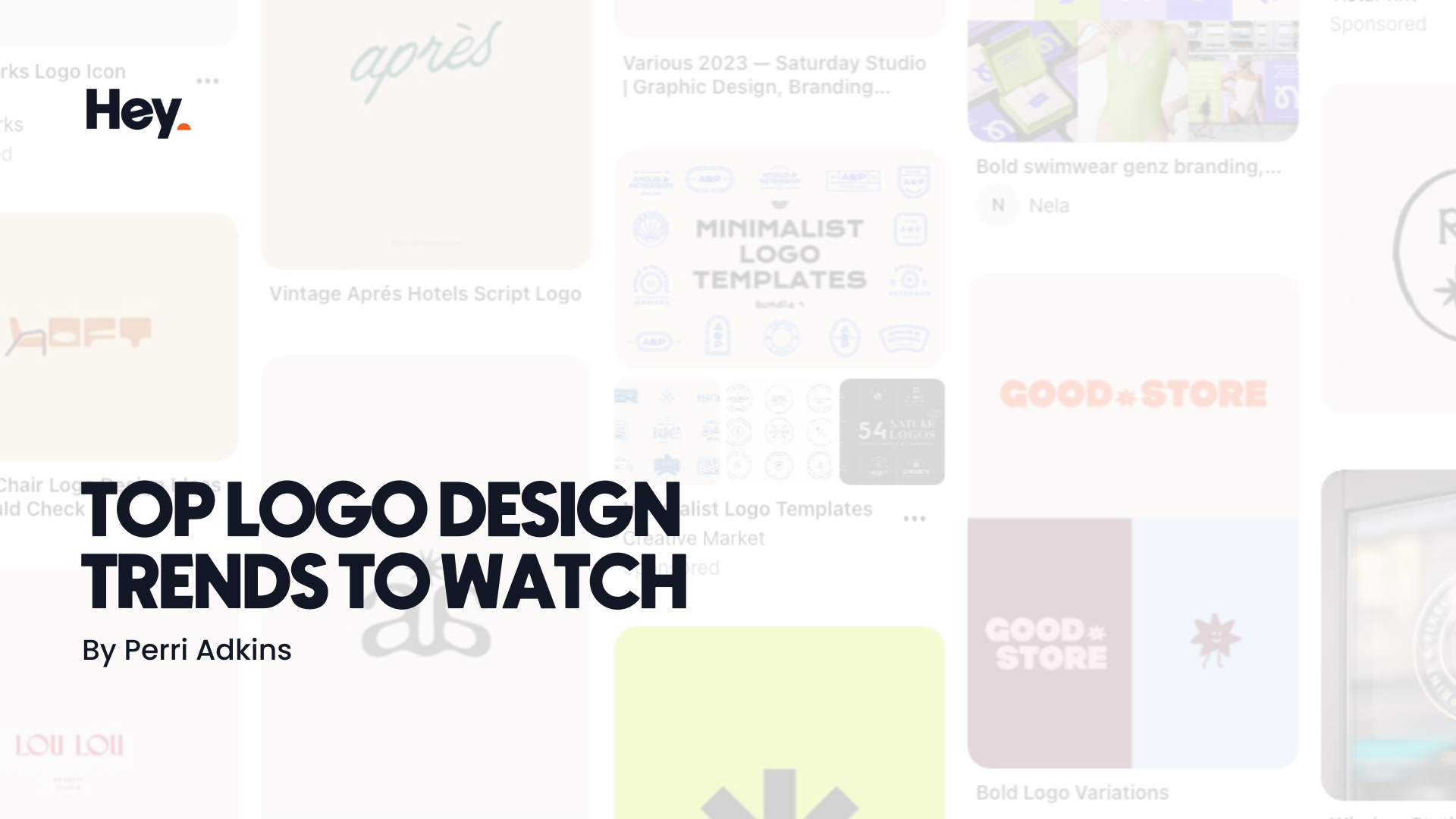
By Perri Adkins
•
March 5, 2025
2025 is off to a good start and over the last month there’s been numerous articles released predicting trends for every aspect of marketing and design. There have been some predictions that have caught our attention more than others. G o Bold or Go Home Minimalist logos have had their time to shine, but in 2025 we’re seeing brands embrace bold, maximalist designs to make a lasting impression. I’m talking oversized elements, vibrant colours and high contrast. In the era of short attention spans, you need to be instantly recognisable. Bold logos cut through the noise and establish a strong presence across both digital and physical spaces. Keep your eyes peeled for: Chunky, oversized fonts that dominate their environment Colour schemes that will make you look twice 3D elements and textural depth to add a new layer to modern branding
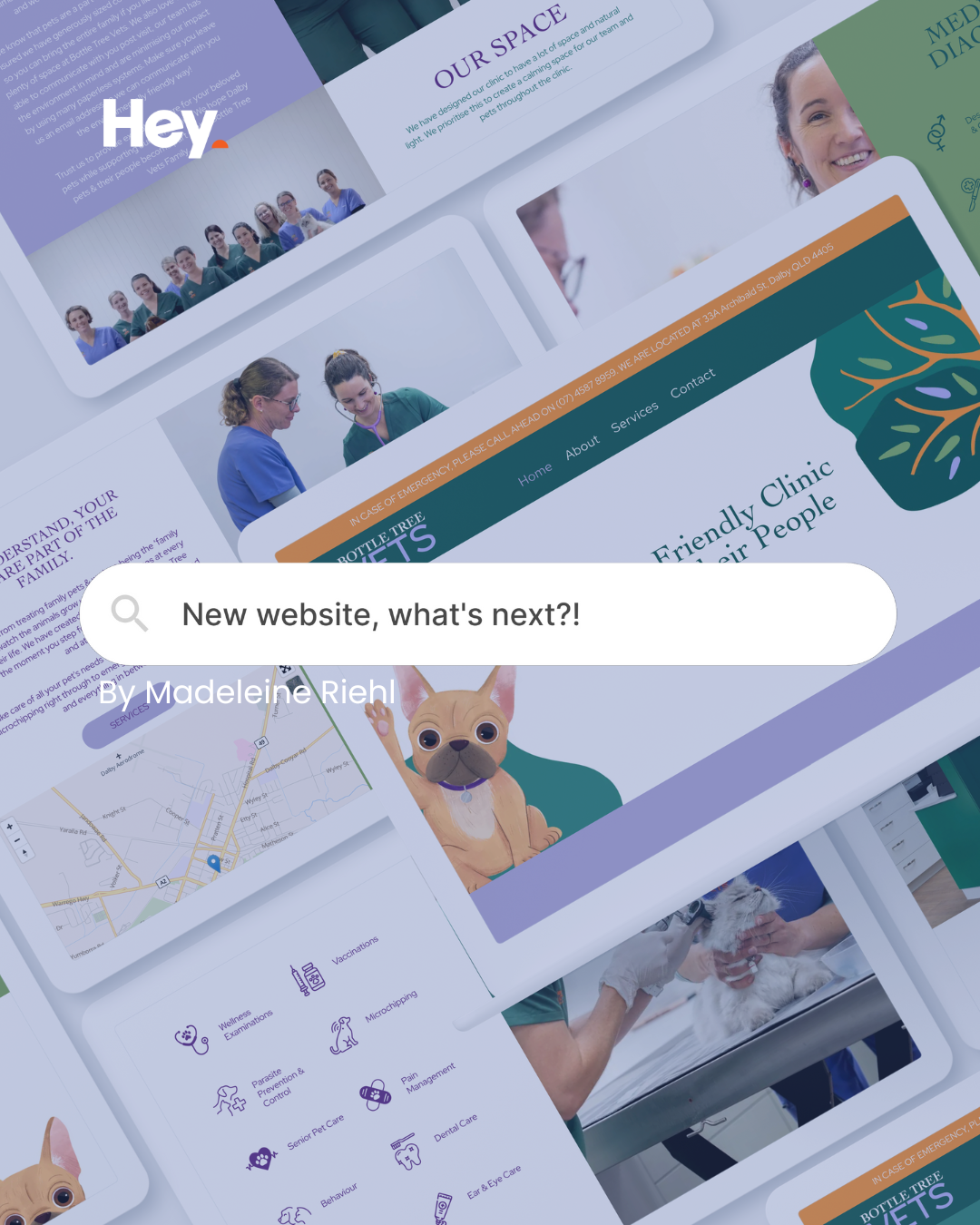
By Madeleine Riehl
•
February 24, 2025
New website - What’s next? So you've just received your amazing new website from Hey Marketing and you're in love. Ok, that might be slightly dramatic but you're loving the new website and you want everyone in the whole world to see it! (sorry... dramatic again!) But seriously, what's next? You've invested in this great, engaging and high conversion focused website - what the heck do you do next?! So glad you asked. To help you maximise your new site and drive more business, here are some key areas to focus on: Social Media Strategy – Tailored to your target audience, with hands-on support or mentoring (remember we’re not a traditional agency!). Fresh Content & Media – Keep your brand engaging with new visuals, videos, and creative assets. Email Campaigns – Stay top-of-mind with your audience and nurture leads. Google Ads & Paid Marketing – Get in front of the right customers faster. Advertising & PR Strategy – Build brand awareness and credibility. Community Engagement – Strengthen your brand presence through local and online communities. Collateral Refresh – Flyers, brochures, capability statements—keep your marketing materials sharp. Ready to chat about the next step forward for your brand? Let's grab a coffee, a fresh juice or a wine - I'm really not fussy.
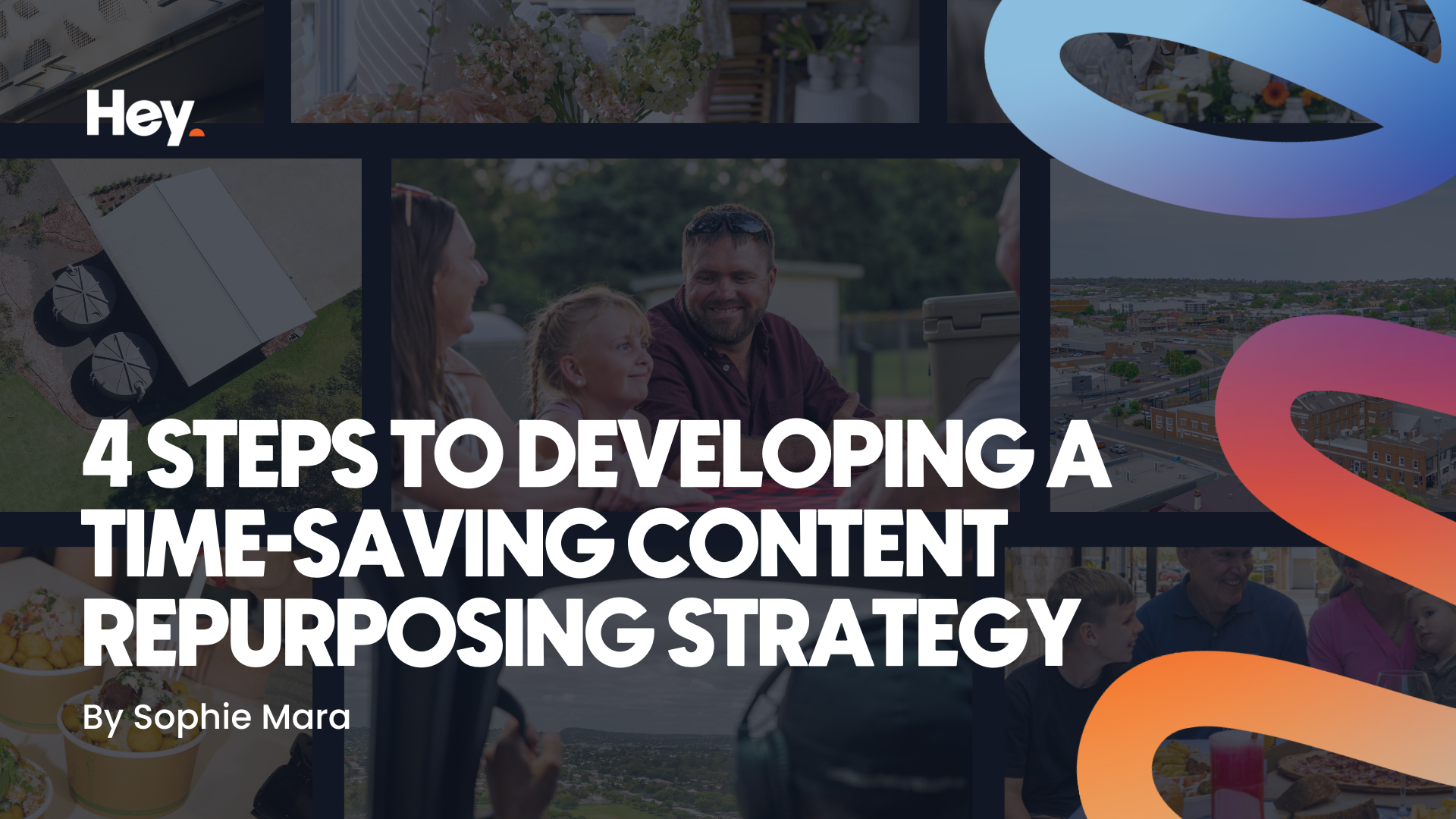
By Sophie Mara
•
February 19, 2025
If you’re a business owner, you’re likely wearing multiple hats from managing people, operations, customer service, and marketing all at once. So the thought of creating fresh content for social media, your website, and advertising can feel overwhelming and near impossible. That’s where content repurposing comes in, a smart strategy that maximises your efforts, saves time, and stretches your marketing budget further! Sounds too good to be true, right? So, what is content repurposing? Seems simple, just repost the same content? Well, yes and no. When we are repurposing content we look to take existing content and give it a face lift of sorts, whether it's adapting it for different platforms, or even audiences. This way, instead of creating brand-new material every time, you can breathe new life into what you’ve already produced. With repurposing content, the possibilities are endless - which is why we love it. Where to start - 4 simple steps. Execute Every Format Great examples of this could be if you write a blog, don’t just post it and forget about it. Turn the blog into social media tiles for LinkedIn. Don’t stop there, create a video talking about the blog topics in a conversational reel for Instagram. What next? Can you use the audio from the video for a podcast episode on Spotify? You see where we are going with this, once you get the ball rolling you will have endless options. Auditing Content The best place to start is to see what you have already got! Sifting through current content and categorising what content is evergreen for your business. Evergreen content refers to anything that isn’t time sensitive. Repurposing evergreen content is also a strategic move as it can be a great way to educate any new followers about your business without having to create new content. Review your Stats - Understand what’s performing! Another great way to get the most out of your repurposed content is to review platform statistics and see what type of content performs best on which platform. This way you can create different modes of content to drive engagement. TikTok reaches the younger demographic who need information in short, easy to consume forms whereas over on LinkedIn you may find people engage more in the detailed, educational parts of the content. Relating to Real Time If there is a current weather event, or maybe a local festival, even a national something day - see where you can relate your already captured content. This style of repurposing works if you are a location based business and can engage with consumers by relating to what they are experiencing. Content repurposing isn’t about cutting corners—it’s about working smarter. By making small tweaks to existing content, you can stay visible, engage your local audience, and grow your business without burning out.

By Madeleine Riehl
•
April 16, 2025
You’ve crafted the perfect email. The subject line is witty, the design is sleek, and your CTA is chef’s kiss. You hit send, sit back, and… then what? Do you cross your fingers and hope for the best? Light a candle for good luck? Or maybe you forget you sent it at all? Stop doing all of that and start thinking about email campaign analytics and actually review them, it’ll change your whole email marketing strategy (I pinkie promise)! In this blog I want to break down the key metrics you should be tracking—without the tech jargon, just a good ol’ friendly chat. 1. Open Rate: Did They Even Show Up? Think of your email like a party invite. You send it out, but how many people actually open it? That’s your open rate—the percentage of recipients who clicked on your email. How to boost it? • A killer subject line (curiosity and personalisation go a long way) • Proper sender name (people open emails from humans, not robots) • Avoiding the spam folder (because what good is an invite if it lands in the trash?) 2. Click-Through Rate (CTR): Did They Take the Bait? Great! They opened your email. Now what? CTR measures how many people clicked on your links. It’s like checking how many party guests actually made it to the dance floor instead of just lurking by the snack table. How to boost it? • Engaging content (keep it clear, concise, and valuable) • A standout CTA (bold, obvious, and irresistible) • Mobile-friendly design (no one likes squinting at tiny buttons) 3. Conversion Rate: Did They Do the Thing? Clicks are great, but did they actually sign up, purchase, download, or click? That’s your conversion rate—the ultimate proof that your email is doing its job. How to boost it? • A seamless user journey (from email to landing page, make it smooth) • Persuasive copy (why should they act NOW?) • Social proof (testimonials, reviews, and success stories) 4. Bounce Rate: Oops, That Didn’t Work… If an email bounces, it means it never reached the recipient’s inbox. It’s like sending an invite to an address that doesn’t exist. There are two types of bounces: • Soft bounce: Temporary issues (like a full inbox) • Hard bounce: Permanent issues (like an invalid email) How to fix it? • Keep your email list clean and updated • Use double opt-in to ensure valid emails • Remove inactive subscribers 5. Unsubscribe Rate: The Party Poopers Nobody likes to see unsubscribes, but they’re part of the game. It’s like when guests leave early—it happens, but you want to make sure it’s not because of a bad DJ (or, in this case, annoying emails). How to reduce it? • Don’t spam people (send relevant, valuable content) • Let them control frequency (weekly vs. monthly options) • Personalise your emails (so they feel special, not spammed) 6. ROI: Is It All Worth It? At the end of the day, you want to know if your email efforts are paying off. Return on Investment (ROI) tells you if your campaigns are bringing in more money than they cost. How to improve it? • Test different strategies (A/B testing is your BFF) • Segment your audience (the right message for the right people) • Automate and personalise (efficiency + relevance = $$$) My final thoughts: Keep an Eye on the Numbers! I’m not great with numbers but analytics are critical, so pay attention! They tell a story. Analytics aren’t just fancy charts and percentages—they tell you exactly what’s working (and what’s flopping) - they don’t lie. Track these key metrics, tweak your strategy, and watch your email campaigns go from meh to magic (that was cringey but I had to, sorry!). Now, go forth and send emails that people actually want to open! P.S. If you need help crafting emails that get results, let’s chat. Your client's inbox deserves better.

By Emily Prestipino
•
April 9, 2025
AI is everywhere; your group chats, your work meetings, your dinner table debates. Everyone’s got an opinion, and most people have at least a surface level idea of what AI can do. But when it comes to design, is AI about to swoop in and steal the job of human designers? Let’s break it down. For startups and small businesses running on tight budgets, AI powered logo generators can seem like a lifesaver. Need a logo? Click a few buttons, and voilà! Instant brand identity (sort of). These tools provide a quick and budget friendly way to get a logo without immediately hiring a designer.

By Perri Adkins
•
March 31, 2025
A brand’s legacy is one of its biggest strengths, built over years; sometimes even decades, of trust, recognition, and emotional connection with its audience. But as times change, so do design trends, customer expectations, and digital platforms. So, how can a legacy brand refresh its identity, especially its logo, without losing the elements that make it special? 1. Understand the Core Identity Before making any design changes, it’s important to figure out what parts of the brand’s identity are essential. Ask yourself: What are the must-keep elements that customers instantly recognise? What emotional connection does the audience have with the brand’s look? What historical significance does the logo carry? Gathering feedback through surveys, customer interviews, and brand audits can help pinpoint what should stay the same and what can be updated. 2. Keep Key Visual Elements A logo refresh should feel like an upgrade, not a total makeover. Look at keeping elements like: Colours: If the brand is known for a specific colour, keep it or tweak it slightly for a fresh look. Fonts: Updating typefaces to a modern style while keeping familiar characteristics can create continuity. Symbols: If there’s a well-known emblem in the logo, consider refining it rather than replacing it entirely. 3. Simplify and Streamline Many legacy brands go for subtle tweaks rather than drastic changes. Simplifying the design can help keep it modern and functional. That might mean: Making lines bolder for better visibility at any size. Removing outdated or cluttered design elements. Adjusting proportions to create a more balanced, aesthetically pleasing look. 4. Embrace Modern Design Principles While keeping the brand’s heritage intact, it’s also important to stay relevant. Consider these updates: Minimalism: A cleaner, more streamlined look makes the logo more versatile. Scalability: The logo should work just as well on a social media icon as it does on a billboard. Versatility: A design that looks great in both black-and-white and full colour increases usability across different mediums. 5. Test and Gather Feedback Once you have a modernised version of the logo, test it out. Share it with stakeholders, loyal customers, and focus groups to get their thoughts. A phased rollout can also help ease the transition and maintain brand trust. 6. Communicate the Evolution A logo update is a big deal, so make sure to communicate it effectively. Let people know: Why the redesign was necessary. What elements were kept to maintain the brand’s essence. How the brand’s core values remain the same. Refreshing a legacy brand’s logo is all about honouring its past while preparing for the future. The best approach is thoughtful refinement rather than a complete reinvention, ensuring customers still see the brand they know and love, just with a fresher, more modern feel. By striking the right balance, brands can successfully evolve while keeping their identity intact. After all, change is inevitable but staying true to who you are is priceless.

By Sophie Mara
•
March 26, 2025
In the digital age, businesses are constantly vying for the attention of potential customers, and social media has long been a go-to platform for many. However, when it comes to driving consistent, high-quality results, email marketing stands out as the more powerful tool. Here are some key reasons why email marketing is essential for businesses, particularly when compared to social media. 1. You Own Your List (It’s YOURS!) Unlike social media platforms, where algorithms and third-party control dictate what your audience sees, with email marketing, you own your list. Building and maintaining an email list means you have direct access to your audience without being at the mercy of changing platform rules. This control gives you the ability to communicate with subscribers on your terms, ensuring that your message reaches them consistently. 2. Higher Conversion Rates (You’re talking direct!) Studies consistently show that email marketing boasts higher conversion rates compared to social media. This is because emails are sent directly to your audience’s inbox, making them more personal and less likely to be ignored in the crowded social media feed. When done right, email campaigns can encourage direct action, such as making a purchase, signing up for an event, or engaging with content, leading to a more tangible return on investment. 3. Personalised Customer Journeys With email marketing, you can craft highly personalized experiences for your subscribers. By segmenting your list and tailoring content based on user behavior, interests, and preferences, you can guide prospects through a more personalized journey. This level of customization is harder to achieve on social media, where you’re often addressing a broad audience with varying interests. 4. Valuable Data Insights Email marketing provides detailed analytics, such as open rates, click-through rates, and conversions, which allow businesses to continuously refine and optimize their strategies. This data is invaluable in understanding customer behavior and improving future campaigns, giving you more control over your marketing efforts than what social media platforms typically offer. In conclusion, email marketing provides a level of ownership, personalization, and data-driven insights that social media simply can’t match. By investing in email marketing, businesses can ensure they reach their customers more effectively and efficiently - we love that! Ready to discuss an email marketing strategy for your biz? Just say Hey.

By Madeleine Riehl
•
March 19, 2025
Once upon a time, there was a brand. The End. Just kidding! Let’s start again. Once upon a time, there was a brand, it had a great product, an excellent service, and a solid marketing plan (and I heard their marketing team was really good looking). But something was missing, connection. That’s where storytelling came in.

By Perri Adkins
•
March 5, 2025
2025 is off to a good start and over the last month there’s been numerous articles released predicting trends for every aspect of marketing and design. There have been some predictions that have caught our attention more than others. G o Bold or Go Home Minimalist logos have had their time to shine, but in 2025 we’re seeing brands embrace bold, maximalist designs to make a lasting impression. I’m talking oversized elements, vibrant colours and high contrast. In the era of short attention spans, you need to be instantly recognisable. Bold logos cut through the noise and establish a strong presence across both digital and physical spaces. Keep your eyes peeled for: Chunky, oversized fonts that dominate their environment Colour schemes that will make you look twice 3D elements and textural depth to add a new layer to modern branding

By Madeleine Riehl
•
February 24, 2025
New website - What’s next? So you've just received your amazing new website from Hey Marketing and you're in love. Ok, that might be slightly dramatic but you're loving the new website and you want everyone in the whole world to see it! (sorry... dramatic again!) But seriously, what's next? You've invested in this great, engaging and high conversion focused website - what the heck do you do next?! So glad you asked. To help you maximise your new site and drive more business, here are some key areas to focus on: Social Media Strategy – Tailored to your target audience, with hands-on support or mentoring (remember we’re not a traditional agency!). Fresh Content & Media – Keep your brand engaging with new visuals, videos, and creative assets. Email Campaigns – Stay top-of-mind with your audience and nurture leads. Google Ads & Paid Marketing – Get in front of the right customers faster. Advertising & PR Strategy – Build brand awareness and credibility. Community Engagement – Strengthen your brand presence through local and online communities. Collateral Refresh – Flyers, brochures, capability statements—keep your marketing materials sharp. Ready to chat about the next step forward for your brand? Let's grab a coffee, a fresh juice or a wine - I'm really not fussy.

By Sophie Mara
•
February 19, 2025
If you’re a business owner, you’re likely wearing multiple hats from managing people, operations, customer service, and marketing all at once. So the thought of creating fresh content for social media, your website, and advertising can feel overwhelming and near impossible. That’s where content repurposing comes in, a smart strategy that maximises your efforts, saves time, and stretches your marketing budget further! Sounds too good to be true, right? So, what is content repurposing? Seems simple, just repost the same content? Well, yes and no. When we are repurposing content we look to take existing content and give it a face lift of sorts, whether it's adapting it for different platforms, or even audiences. This way, instead of creating brand-new material every time, you can breathe new life into what you’ve already produced. With repurposing content, the possibilities are endless - which is why we love it. Where to start - 4 simple steps. Execute Every Format Great examples of this could be if you write a blog, don’t just post it and forget about it. Turn the blog into social media tiles for LinkedIn. Don’t stop there, create a video talking about the blog topics in a conversational reel for Instagram. What next? Can you use the audio from the video for a podcast episode on Spotify? You see where we are going with this, once you get the ball rolling you will have endless options. Auditing Content The best place to start is to see what you have already got! Sifting through current content and categorising what content is evergreen for your business. Evergreen content refers to anything that isn’t time sensitive. Repurposing evergreen content is also a strategic move as it can be a great way to educate any new followers about your business without having to create new content. Review your Stats - Understand what’s performing! Another great way to get the most out of your repurposed content is to review platform statistics and see what type of content performs best on which platform. This way you can create different modes of content to drive engagement. TikTok reaches the younger demographic who need information in short, easy to consume forms whereas over on LinkedIn you may find people engage more in the detailed, educational parts of the content. Relating to Real Time If there is a current weather event, or maybe a local festival, even a national something day - see where you can relate your already captured content. This style of repurposing works if you are a location based business and can engage with consumers by relating to what they are experiencing. Content repurposing isn’t about cutting corners—it’s about working smarter. By making small tweaks to existing content, you can stay visible, engage your local audience, and grow your business without burning out.

